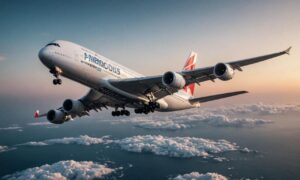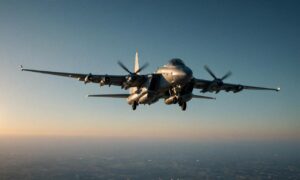In the realm of aviation, a turbine aircraft represents a marvel of engineering and innovation, propelling modern air travel into the skies with efficiency and power. Understanding what constitutes a turbine aircraft requires delving into its construction, operation, and significance within the aviation industry.
Definition of Turbine Aircraft
A turbine aircraft, often referred to as a jet aircraft, is a type of aircraft that utilizes gas turbine engines for propulsion. These engines, also known as jet engines, convert fuel into mechanical energy by igniting it within a combustion chamber and using the resulting high-pressure gases to drive a turbine, which in turn rotates the engine’s compressor and generates thrust.
Characteristics of Turbine Aircraft
Turbine aircraft are distinguishable by several key characteristics:
- Jet Engines: Turbine aircraft are equipped with jet engines, which provide high levels of power and efficiency compared to piston engines.
- Speed: Turbine aircraft are capable of achieving high speeds, making them ideal for long-distance travel.
- Altitude: These aircraft can fly at high altitudes, often cruising above commercial air traffic to optimize fuel efficiency and reduce travel time.
- Range: Turbine aircraft typically have longer ranges compared to piston-powered counterparts, allowing for non-stop flights over vast distances.
Types of Turbine Aircraft
There are several categories of turbine aircraft, each designed for specific purposes:
- Commercial Jets: These large passenger aircraft are used for scheduled air transportation, carrying passengers and cargo across domestic and international routes.
- Business Jets: Business jets cater to corporate and private travelers, offering luxury amenities and personalized service for executives, entrepreneurs, and high-net-worth individuals.
- Military Jets: Military turbine aircraft serve various roles, including fighter jets for air combat, reconnaissance aircraft for intelligence gathering, and transport aircraft for troop and equipment deployment.
- General Aviation Jets: General aviation turbine aircraft encompass a range of small to mid-size jets used for private, charter, and air ambulance operations.
Advantages of Turbine Aircraft
Turbine aircraft offer numerous advantages over other propulsion systems:
- Efficiency: Jet engines are highly efficient, providing greater thrust per unit of fuel compared to piston engines.
- Speed: Turbine aircraft are capable of reaching higher speeds than piston-powered aircraft, reducing travel time for passengers and cargo.
- Altitude: Jet engines enable turbine aircraft to fly at higher altitudes, where air resistance is lower, resulting in smoother flights and reduced fuel consumption.
- Reliability: Gas turbine engines are known for their reliability and durability, requiring fewer maintenance intervals compared to piston engines.
In summary, a turbine aircraft represents a pinnacle of aviation technology, harnessing the power of jet engines to propel passengers and cargo across the globe with speed, efficiency, and reliability. Whether soaring through the skies as a commercial airliner, a luxurious business jet, or a nimble military aircraft, turbine-powered flight continues to shape the future of air travel.
Environmental Impact of Turbine Aircraft
While turbine aircraft offer numerous advantages in terms of efficiency and speed, they also have environmental implications:
- Emissions: Jet engines emit greenhouse gases and other pollutants during combustion, contributing to climate change and air quality issues.
- Noise Pollution: Turbine aircraft, especially during takeoff and landing, generate significant noise pollution, affecting communities near airports.
- Resource Consumption: Operating turbine aircraft requires significant amounts of fossil fuels, contributing to resource depletion and reliance on non-renewable energy sources.
Addressing Environmental Concerns
Efforts are underway in the aviation industry to mitigate the environmental impact of turbine aircraft:
- Alternative Fuels: Research and development into sustainable aviation fuels aim to reduce carbon emissions and dependence on traditional jet fuels.
- Noise Reduction: Aircraft manufacturers and operators invest in technologies to minimize noise pollution through quieter engine designs and flight procedures.
- Efficiency Improvements: Continuous improvements in engine efficiency and aerodynamics help reduce fuel consumption and emissions per passenger mile.
| Environmental Impact | Efforts to Address |
|---|---|
| Emissions | Development of sustainable aviation fuels |
| Noise Pollution | Investment in quieter engine designs |
| Resource Consumption | Improvements in engine efficiency |
Frequently Asked Questions
1. Are all turbine aircraft jet-powered?
No, while most turbine aircraft use jet engines for propulsion, there are exceptions such as turboprop aircraft which utilize a turbine engine to drive a propeller.
2. How do turbine aircraft differ from piston-powered aircraft?
Turbine aircraft, also known as jet aircraft, utilize gas turbine engines for propulsion, offering higher speeds, altitudes, and efficiency compared to piston-powered aircraft which rely on internal combustion engines.
3. Can turbine aircraft operate in extreme weather conditions?
Yes, turbine aircraft are designed to operate in various weather conditions including extreme cold and heat, but flight operations may be affected by severe weather such as storms or high winds.
See also:






